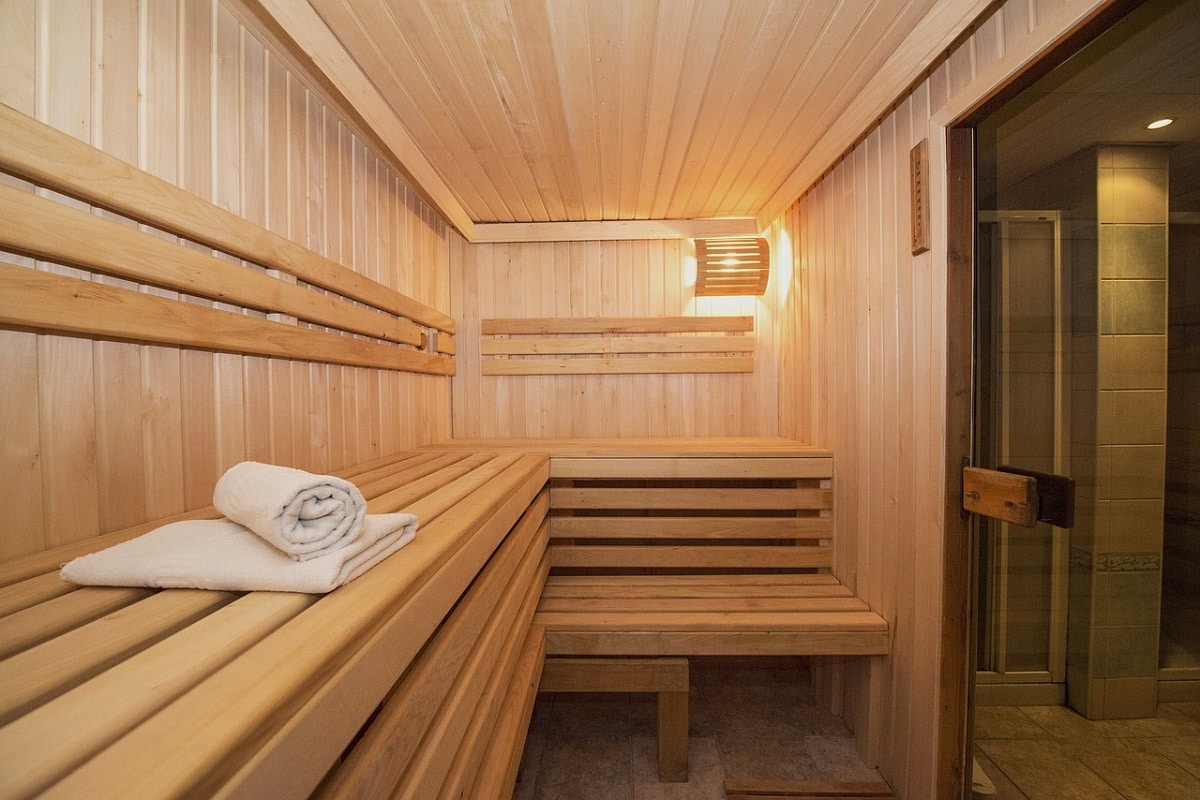What Are The Differences?
Is One More Effective As Protocol For Health Than The Other?
Step out of the shadow of billowing, impenetrable vapor to understand the spectrum of health benefits revealed through the light of infrared sauna therapy compared to the steam bath.
The desire to optimize our health through heat therapy is global, ancient, and natural to the human experience. The history of the methodology behind the design of heat units created to induce copious sweating is long, textured, and inventive. There are many available options to choose from as you begin your journey into thermal therapy. When it comes to steam vs infrared saunas, how can you know which method is most effective?
Steam rooms are popular in gyms, spas, and country clubs around the developed world. They are famous for their ability to induce deep states of relaxation and detoxification through high amounts of perspiration. Understanding the history and the mechanism behind the steam room will help you on your journey through thermal therapy and allow you to make the enlightened choice.
Infrared saunas for your home do not rely on ancient methodology to produce evolved health benefits, but rather they use state-of-the-art technology and craftsmanship. It is with reverence to ancient tradition, coupled with the latest in scientific discoveries, that the infrared sauna is able to offer multi-faceted health benefits. Bring to light the health risks associated with the steam room and make the choice for yourself!
What Is A Steam Room?
Steam rooms are an ancient and global practice of heat therapy that specifically use wet heat to induce transformation. An enclosed space is necessary to capture the billowing steam that is produced using a variety of methods. Water is heated to vapor to create an environment that is 100% humid within the enclosure. Steam rooms require a much lower temperature (100-120 degrees Fahrenheit), compared to the traditional dry sauna. The intensity of moisture induces copious sweating without increasing the external temperature (1).
The mechanism behind the production of steam has changed over centuries of use through technological evolution. Originally steam baths were built around a naturally occurring hot spring. As the steam bath spread in popularity around the world, different methods for creating vapor were explored. Intentionally spilling water over hot rocks to produce steam in an enclosed structure became the most popular. Today, an electric generator is used to bring water to a boiling temperature and hot vapor is released into the room. Steam rooms are manufactured using non-porous material such as tile or plastic (2).
The intensity of moisture in the air does not allow the sweat on the surface of the skin to evaporate, and so it increases the internal temperature of the body.
The structure of steam rooms varies, from small tents inside people’s homes to luxury-tiled edifices found in spas and gyms. Often, steam rooms are shared public spaces and are segregated by gender, as is the case with the locker room.
As steam builds within the enclosed space a visually impenetrable wall of steam is created. It is difficult to see beyond the length of your own arm while immersed in the steam bath. Breathing can become strained and uncomfortable and it is not recommended to stay inside the steam for more than twenty minutes. Often individuals take their steam baths in intervals of time as the steam and moisture become very uncomfortable.
The Steam Bath: A Brief History

The Steam bath has its roots in the great Roman and Greek empire. This tradition spread to Europe during the Victorian era and today they are found in gyms, spas and country clubs all over the world.
Roman and Greek bathhouses paved the way for the modern spa today featuring both hot spring bathing and intentionally constructed steam rooms. The bathhouse provided an opportunity to purify the body through intense sweating opening up the pores to detoxify the body of pollutants, thus promoting heightened states of health (3).
Purification of the body was the original intent behind the Roman and Greek bathhouse, but the ritual evolved into a social meeting place, where political decisions were made and business deals struck.
The Roman and Greek bathhouse was a cornerstone of society and shaped one of the most powerful civilizations ever known to our planet. The popularity of the steam room as used in these bathhouses spread to Europe and became a staple in the Victorian Era culture. Steam rooms have been a place of refuge and social communion for many years.
Health Benefits of a Steam Room
The steam room as an option for heat therapy does offer several health benefits. The two primary benefits being a powerful detoxification protocol and the clearing of congestion in the sinuses and lungs. The moist nature of steam rooms induces copious sweating that serves to detoxify the body and the nature of the wet heat serves to loosen the mucus from the lining of the lungs and sinuses.
The high level of humidity in the chamber does not allow sweat to evaporate off the skin and therefore increases the internal temperature of the body to induce even further sweating. The body can detoxify from toxic pollutants by using the liver and kidneys or through sweat. Any heat therapy that encourages perspiration will be beneficial as a detoxification protocol.
The steam room creates a climate of heated humidity that serves to warm the mucous membranes inside the pulmonary system; this is thought to help break up congestion inside the lungs and sinuses. The most remarkable trait that the steam bath offers is its unique ability to clear nasal congestion (4).
While there are some health benefits associated with the high levels of warm humidity, there are also some serious drawbacks that may potentially jeopardize health and wellbeing.
Steam Bath: A Breeding Ground For Bacteria And Mold

The warm moist chambers of steam rooms are, at times, an ideal breeding ground for harmful bacteria. Bacteria thrive in warm moist environments and steam rooms are often communal and are therefore a potential cesspool for the spreading of germs. Steam baths may breed and spread a whole host of harmful bacteria, if you are looking to improve your health through thermal therapy it would be wise to steer clear of this bacterial breeding ground (5).
Robin Evans, a dermatologist based in Stanford, Connecticut warns of the hazards of bacterial growth in the steam rooms when he says:
“One could readily develop infections on the skin due to these microorganisms including fungal or yeast skin rashes, impetigo or other bacterial infections.” (6)
In addition to risk of bacterial bloom in the warm, moist climate of the steam bath, mold growth is pervasive. Mold may be poisonous when inhaled. Contrary to the steam room’s allure to clear nasal congestion, the reality is that very often it is the cause of pulmonary infections due to the prevalence of mold.
Steam rooms are often associated with luxury and affluence, which means that uncovering the potential health risks and drawbacks of these units of heat requires an honest appraisal of the conditions. Unearthing the truth about steam rooms threatens the social stratosphere of privilege and the image that spas and gyms may want to uphold. Gratefully, there are alternatives to the steam bath that offer the same health benefits and so many more without any of the harmful risks.
If you are unwilling to sit through the discomfort of heavy steam with its potential of bacterial infection and mold growth, yet, still want to explore the benefits of heat therapy then look toward the light, the infrared light.
Infrared Saunas – A Powerful and Safe Alternative
The Method Behind Infrared Light: Radiant Heat For Maximum Health
Infrared saunas for your home may be more advantageous than the steam room and removes the risks involved in wet heat therapy. The wavelengths of infrared light are healing upon immediate contact with the human skin. As the infrared light seeps beyond the initial membrane of the skin to penetrate into the soft tissue of the body.
The human body is comprised of 50 trillion cells, and each cell in the body has what could be considered an, ‘energy plant’: the mitochondria, where ATP (Adenosine Triphosphate) is produced. When the body is exposed to the healing rays of the infrared spectrum, the living anatomy of the human form invites the light into its network system to create a domino effect on positive health transformation (7).
Infrared wavelengths exist on the invisible spectrum of light and cannot be seen with the human eye, but can be felt as heat. The infrared light is able to penetrate deeply into the epidermis and therefore fully engage the body’s network. As the rays of infrared light burrow into the epidermis, the largest human organ, they heat the body up from the inside out. The body responds to both the heat and light to create an outpouring of health benefits (8).
Infrared Saunas May Be More Effective In Engaging The Sweat Response Than Steam Rooms
Infrared sauna detoxification may be more powerful than what is experienced in the traditional steam room, despite lower external air temperatures. As the infrared light penetrates into the soft tissue of the body it causes substantially more sweating to occur than the wet heat of the steam room (9). Further, wet heat can be uncomfortable as sweat is unable to evaporate off the body.
Infrared Saunas Are More Comfortable And Relaxing
The warm hues of the infrared sauna inside the wood structures are inviting as an oasis of relaxation: It may be difficult to sink into states of meditation and deep relaxation with the high levels of humidity in the steam rooms, particularly with water dripping everywhere it is not possible to control your desired music, read a book or see anything at all.
Halotherapy Versus The Steam Room For Pulmonary Health

Find an infrared sauna that also comes equipped with Himalayan salt walls to benefit pulmonary health through the release of negative ions. Saline therapy has been used for centuries as a sound and effective treatment for bronchial disorders. Steam rooms often boast of their ability to clear congestion in the lungs and sinus. This may be misleading since the steam bath is often latent with harmful bacterial growth and mold that destroys pulmonary health.
Easy To Install And Safe To Use At Home: Some Additional Advantages To Infrared Sauna Use Over Steam Rooms
The radiant dry heat of the infrared sauna makes it very easy to set up at home as opposed to a steam bath that needs to be in a sealed-off chamber made with non-porous materials. An infrared sauna for your home is easy to install and will not affect the integrity of the building with all of the moisture generated through steam rooms.
The infrared sauna will not hinder your home or your health, as is sometimes the case with the steam bath. The infectious spread of mold and harmful bacteria that comes with some steam room experiences can be avoided with the installation of an infrared sauna into your home.
Medical Grade Light Therapy: A Colorful Addition
Medical grade color light therapy was discovered by NASA as a healing modality in the treatment of a variety of skin conditions including wound healing for burn victims (10). Steam rooms are not able to provide the benefits of light therapy due to the moisture in the air. The intrinsic value of light frequency on human physiology cannot be underestimated. Infrared saunas allow for both the benefits of heat as well as those afforded through light therapy.
Health Benefits Unique To Broad Spectrum Infrared Sauna Therapy
Infrared sauna therapy as a healing modality provides a cascade of health benefits that are in direct response to the impact that infrared light waves have on the human organism.
A list Of Potential Health Benefits Unique To Infrared Sauna Therapy (Not Attained With Steam Room Use):
Improved Circulation In Response To Infrared Light: Activate mitochondrial response to induce positive circulation (8).
Collagen Production: Increase the skin’s elasticity and youthful glow with exposure to the near-infrared light waves (11).
Enhanced Rates of Injury and Muscle Recovery: Bone fractures; ligament tears and muscle ruptures heal exponentially faster when exposed to the broad spectrum of infrared light waves (10).
Restoration Of The Endocrine System: Balance the thyroid, adrenals, pituitary, pineal, and reproductive glands( 11).
Freedom From Depression: Exposure to the infrared rays stabilizes serotonin production to produce a brain chemical gateway back to joy. (11)
Infrared Sauna Therapy: The Enlightened Choice

Emerge from the haze of a steam bath into the light of truth as you marinate in the warm glow of infrared light. Reverence to the ancient tradition of heat therapy coupled with the most current evolution in technological advancement makes infrared sauna therapy safe, effective, and germ free option for individuals interested in exploring heat therapy modalities.
While it is true that many forms of heat therapy can be beneficial to human physiology, the health risks involved in taking steam baths may not be worth it, particularly as there are other alternatives that are more heightened in health benefits, and less messy!
As you illuminate your knowledge base regarding the options available to you in the realm of heat therapy, the ease, efficacy, and overall experience of infrared sauna therapy may very well beckon you.
Sources:
- https://www.healthline.com/health/steam-room-benefits
- https://en.wikipedia.org/wiki/Steambath
- https://www.tylolife.co.uk/sauna-bathing/the-history-of-sauna-and-steam/history-of-the-steam-room/
- https://www.medicalnewstoday.com/articles/320314
- https://www.researchgate.net/publication/338096502_Study_of_the_prevalence_of_bacterial_contamination_in_some_steam_baths_in_Tripoli
- https://www.medexpress.com/about/newsroom/press-releases-media-coverage/medexpress-sanitary-steam-rooms.html
- https://www.brucelipton.com/books/biology-of-belief
- https://www.ncbi.nlm.nih.gov/pubmed/16120414
- https://www.womenshealthmag.com/health/a26446700/sauna-vs-steam-room-benefits/
- https://www.nasa.gov/topics/nasalife/features/heals.html
- https://www.ncbi.nlm.nih.gov/pubmed/25574521


